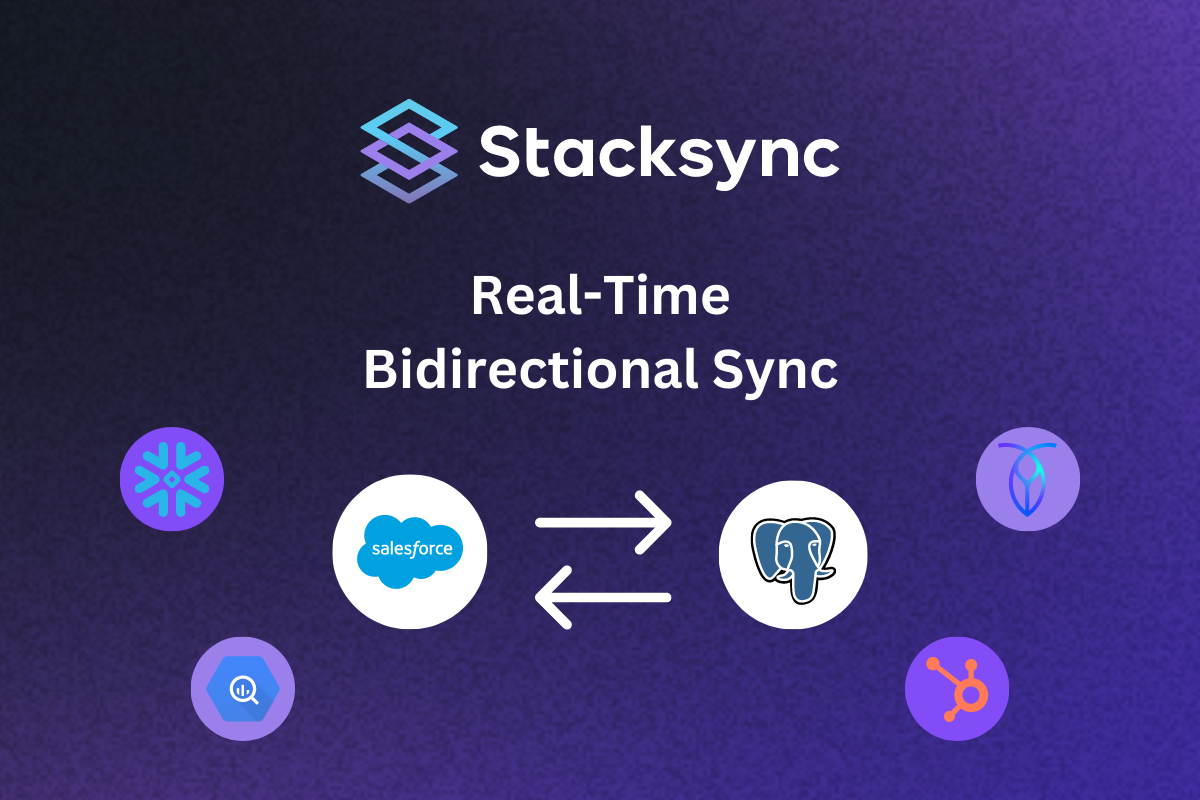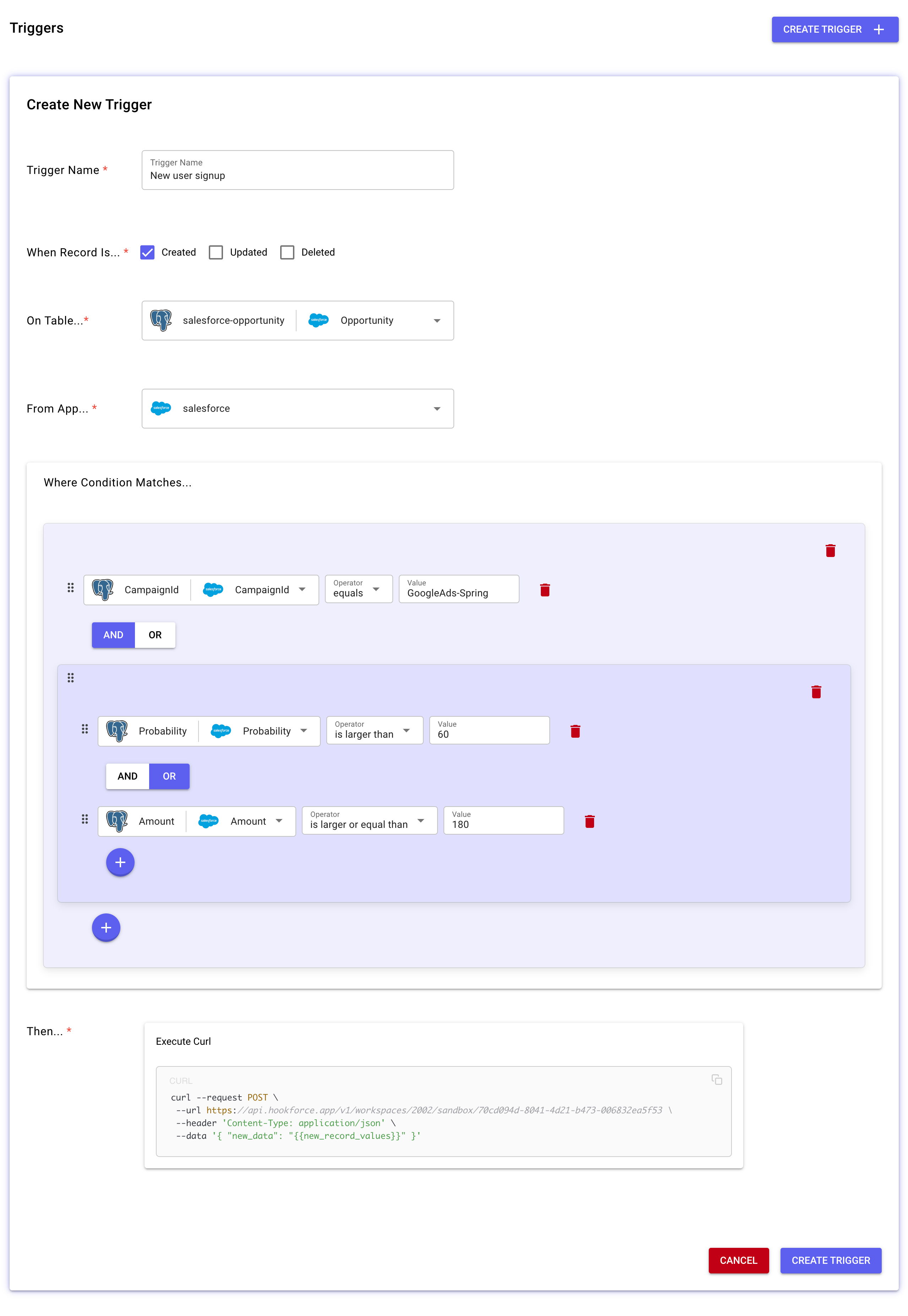Stacksync: An alternative to Heroku Connect for Live Two-Way Salesforce and PostgreSQL Synchronization.
 Nagendra Singh
Nagendra Singh
Introduction:
Hey there, and welcome to our latest fun blog post! Today, we're going to explore the amazing world of real-time bi-directional synchronization between Salesforce and PostgreSQL databases with the help of Stacksync.cloud. This awesome platform makes syncing your data a breeze, guaranteeing consistency and smooth sailing for your business processes.
So, what's Stacksync.cloud all about? It's a fantastic cloud-based platform that provides effortless, real-time bi-directional syncing between different data sources, like Salesforce and PostgreSQL databases. This strong service makes sure your data stays in sync across platforms, getting rid of manual updates and lowering the chances of data mix-ups.
Why Stacksync?
Real-time synchronization: Stacksync offers real-time bi-directional syncing, ensuring that your data is always up to date, reducing the likelihood of data discrepancies.
Efficient API resource usage: Stacksync features built-in intelligent batching and retry logics, which consume fewer API credits than custom integrations for the same tasks. This is due to the platform's massive optimization for such logic, making it a more efficient choice compared to custom-coded solutions.
Ease of use: The platform is designed for simplicity, with a user-friendly interface that makes setting up and maintaining your sync a breeze.
Scalability: Stacksync can easily scale to accommodate your business's growing needs, whether you have a small team or a large enterprise.
Security: Stacksync uses industry-standard encryption and security protocols to keep your data safe and secure.
Getting Started with Stacksync :
To demonstrate the power of Stacksync.cloud, we'll walk you through the process of setting up real-time bi-directional sync between a Salesforce instance and a PostgreSQL database.
Step 1:
Sign up for Stacksync Head over to the Stacksync.cloud website (https://www.stacksync.cloud/) and sign up for an account. You can choose from various pricing plans depending on your needs, including a free trial to test the service.
Step 2:
Connect Salesforce and PostgreSQL Once you've logged into Stacksync, navigate to the "Connections" tab and click "Add Connection." You'll be prompted to select your data sources. For this example, choose "Salesforce" and "PostgreSQL." Enter the required credentials for each data source and click "Connect."
Step 3:
Configure your sync settings After connecting your data sources, you'll need to define your sync settings. Navigate to the "Sync" tab and click "Add Sync." Choose the Salesforce object and PostgreSQL table you'd like to sync and map the fields you want to synchronize between them. You can also configure advanced settings, such as conflict resolution and data transformations if needed.
Step 4:
Start the sync Once you've configured your sync settings, click "Start Sync" to initiate the real-time bi-directional sync between your Salesforce and PostgreSQL data sources. You can monitor the sync status and view logs for any errors or issues.
Step 5:
Monitor and maintain your sync Stacksync.cloud provides tools for monitoring and maintaining your sync. The platform includes a dashboard that displays the sync status, including the number of records synced and any errors encountered. You can also view detailed logs and receive notifications about your sync.
Leveraging Stacksync's Webhook Feature for Custom Workflows:
Another exciting feature of Stacksync.cloud is the built-in Webhook functionality. This allows users to trigger custom workflows from an HTTPS endpoint when their data is updated. You can easily integrate with AWS Lambda functions, Zapier/Make workflows, or any other service that accepts incoming webhooks.
The Stacksync triggers operate in a no-code environment, enabling you to create event listeners for specific data updates, such as when a user is created or a deal is closed. You can also apply complex filters to reflect your custom business logic, like triggering a webhook when a deal is created with a contract amount larger than $1000 and the country is the US.
When your data is updated and the conditions of a trigger are met, Stacksync will send a message to your custom HTTPS endpoint. The message can contain the record data itself, selected fields in a JSON format, logging information, or any other relevant data.
You can create any number of triggers in your Stacksync base to accommodate your unique business needs, providing a highly customizable and flexible solution for managing your data.

No More API Rate Limits and Restrictions
Stacksync eliminates Salesforce API rate limits by enabling you to query your database in SQL without any limitations. The data is the same, you can read and write as you would do with an API! With traditional API requests, you often face reduced filtering options, quota limits, speed limits, and paginated results (up to 100 results max per request). However, Stacksync empowers you to read and write your data as if you were using an API but without the restrictions imposed by API capabilities.
Ready to Experience Stacksync for Yourself?
Stacksync.cloud offers a powerful, user-friendly solution for real-time bi-directional synchronization between Salesforce and PostgreSQL databases. With this platform, businesses can ensure that their data remains consistent and up to date, reducing the likelihood of data discrepancies and improving efficiency. Why not give Stacksync a try and see how it can transform your CRM integrations? Just use this special referral link to sign up: https://app.stacksync.cloud/referral/signup/nagendra
By joining through this link, you'll unlock all the amazing features Stacksync offers and become part of our growing community of happy users enjoying real-time, bi-directional data synchronization. Don't hesitate – upgrade your data management experience today!
Useful Links:
Stacksync is a cloud-based platform that provides real-time bi-directional synchronization between Salesforce and PostgreSQL databases. It features user-friendly interface, scalability, security protocols, and a Webhook feature that allows users to trigger custom workflows from an HTTPS endpoint when their data is updated. Sign up with the special referral link to unlock all the features and join the growing community of happy users.
Subscribe to my newsletter
Read articles from Nagendra Singh directly inside your inbox. Subscribe to the newsletter, and don't miss out.
Written by

Nagendra Singh
Nagendra Singh
Allow me to introduce myself, the Salesforce Technical Architect who's got more game than a seasoned poker player! With a decade of experience under my belt, I've been designing tailor-made solutions that drive business growth like a rocket launching into space. 🚀 When it comes to programming languages like JavaScript and Python, I wield them like a skilled chef with a set of knives, slicing and dicing my way to seamless integrations and robust applications. 🍽️ As a fervent advocate for automation, I've whipped up efficient DevOps pipelines with Jenkins, and even crafted a deployment app using AngularJS that's as sleek as a luxury sports car. 🏎️ Not one to rest on my laurels, I keep my finger on the pulse of industry trends, share my wisdom on technical blogs, and actively participate in the Salesforce Stackexchange community. In fact, this year I've climbed my way to the top 3% of the rankings! 🧗♂️ So, here's to me – your humor-loving, ultra-professional Salesforce Technical Architect! 🥳